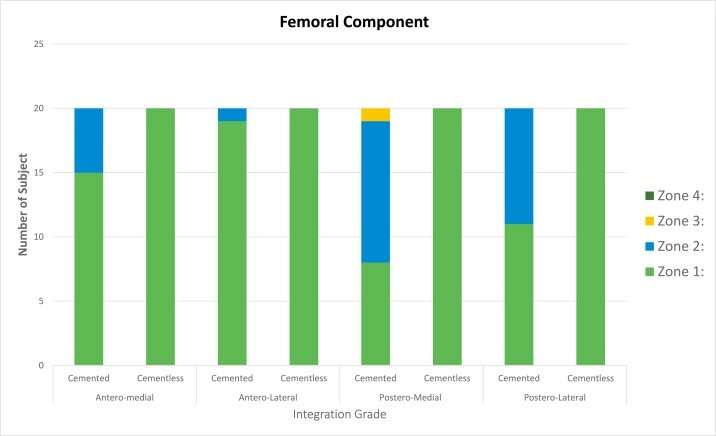
Cementless knee replacement, an alternative approach to the traditional surgery in which bone cement is used, is gaining interest among orthopedic surgeons. Using a novel MRI technique, researchers at Hospital for Special Surgery (HSS) found that a cementless implant demonstrated excellent biologic fixation, and even improved fixation of implant components in some areas in the joint, compared to the standard cemented implant.
HSS hip and knee surgeon Geoffrey Westrich, MD, and colleagues in the HSS Radiology Department used an advanced imaging technique known as “multi-acquisition variable-resonance image combination selective MRI” to assess fixation in patients who had a cementless knee replacement compared to those whose implant was affixed with bone cement.
“The purpose of our study was to quantify and compare the fixation of uncemented versus cemented knee replacement components,” said Dr. Westrich, lead investigator. “At an average patient follow-up of 16 months, our study demonstrated robust fixation of the cementless knee replacement components, with results comparable to the cemented total knee replacements. And while there was no clinically significant difference regarding overall fixation in the knee, there were some component areas in which cementless fixation appeared to be superior.” The study was published in Arthroplasty Today.
The HSS researchers performed MRIs in 20 patients who had a cementless knee replacement. A matched control group of 20 patients with a cemented knee replacement was also evaluated. The images were reviewed by a fellowship-trained musculoskeletal radiologist specializing in the interpretation of joint replacement MRI, including more than 20 years of experience in assessing bony fixation of knee replacement components.
In a traditional knee replacement, implant components are secured in the joint using bone cement. It’s a tried-and-true technique that has worked well for decades. But eventually, over time, the cement may start to loosen from the bone and/or the implant. This loosening is the leading cause of revision surgery, in which a patient needs a second knee replacement.
“With the cementless prosthesis, the components are press fit into place for biologic fixation, which basically means that the bone will grow into the implant,” explains Dr. Westrich, who believes a well-designed cementless implant will make loosening over time less likely. This could enable a total knee replacement to last much longer, a particular concern for younger patients.
“Overall, traditional knee replacement offers excellent outcomes and longevity,” he says. “However, younger patients generally put more demands on their joint, causing more wear and tear and potential loosening. The cemented knee implant used in a traditional joint replacement usually lasts 15 to 20 years.”
Cementless implants have been used successfully in total hip replacement surgery for many years. It has been much more challenging to develop a cementless prosthesis that would work well in the knee because of its particular anatomy, Dr. Westrich explains.
“Early generation cementless implants had numerous design flaws resulting in loosening and poor survivorship compared to cemented knee replacements,” he says. “More contemporary cementless knee components such as those used in our study utilize highly porous surfaces to promote biologic fixation of the prosthesis. This should improve outcomes.”
Candidates for the cementless procedure are generally patients under age 70 with good bone quality to promote biologic fixation. In addition to younger patients, Dr. Westrich notes that the cementless implant may prove to be a good option for very overweight patients who tend to put more stress on their joint replacement.
Source: Read Full Article





